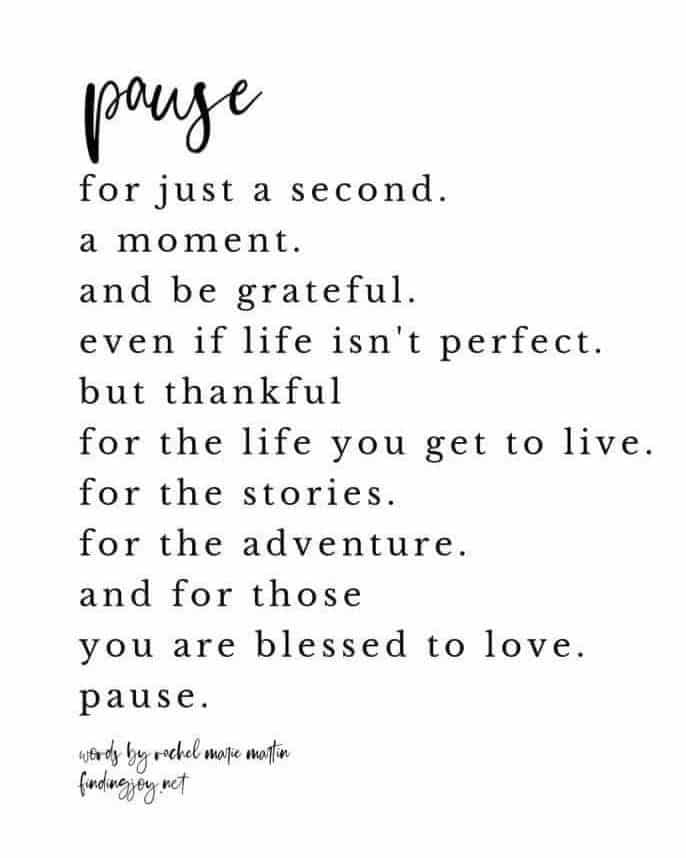Unleashing the Power of Gratitude in You and Your Classroom
Sometimes, when it rains, it pours. I have felt the meaning behind that sentiment acutely recently. It has been a hard few weeks at my school, in large part due to life-altering tragedies several of my colleagues have experienced. I have a colleague who lost a step son and two colleagues who lost their spouses, all very suddenly, all within the last six weeks. I have another colleague whose father-in-law was hit by a car and now has a long, arduous road to recovery ahead of him.
I live in Charlottesville, Virginia, and as I write another tragedy is unfolding here. Schools are closed today because a gunman, who killed three University of Virginia football players and injured two more, was at large. We just received word that he is in custody, so now the grieving process starts for the UVA community.
When the rain starts pouring down like this, it’s easy to feel like you are drowning. It’s easy to feel like the world is deeply unfair. It can become harder to stay focused on the people and moments around us that really matter. I’ve been feeling like this a lot lately.
In the midst of feeling these hard feelings, I did something I do too often to distract myself: I scrolled through social media. A childhood friend I now follow on social media just posted the quote below. What makes this post extra poignant is that this particular friend also suffered the sudden loss of her spouse, at only 43 years old, less than a year ago. Since his death, she has been honest and vulnerable in her grief in a way I don’t think I would have the courage to be. She also made the decision, soon after his death, to celebrate her husband and focus on beautiful memories rather than letting her grief consume her. I am in awe that, even though she and her 12 year old daughter had their lives turned upside down, she always remains hopeful and positive. Pause…and be grateful. Reading her post humbled me. If my old friend can be grateful, surely I can too. And the more I have researched gratitude for this blog, the more convinced I am that teachers and students everywhere could benefit from more of it. So in this season of Thanksgiving, let’s first find out the benefits of gratitude on the brain and, in turn, on teaching and learning and then investigate a few ways to cultivate gratitude.
Pause…and be grateful. Reading her post humbled me. If my old friend can be grateful, surely I can too. And the more I have researched gratitude for this blog, the more convinced I am that teachers and students everywhere could benefit from more of it. So in this season of Thanksgiving, let’s first find out the benefits of gratitude on the brain and, in turn, on teaching and learning and then investigate a few ways to cultivate gratitude.
The Benefits of Gratitude
The effects of gratitude on the brain have been studied for many years, and it has been widely proven that expressing or showing gratitude towards others causes our brain stem to release dopamine, which triggers positive emotions. Also, just reflecting on positives or writing down things we’re thankful for releases serotonin, which enhances mood and motivation. What’s more, as Dr. Christina Costa explains in this inspiring TedTalk, when you get in the habit of regularly expressing or writing down things you are grateful for, you can actually start to rewire your brain! Essentially, the more we focus on things we’re grateful for, the easier it is to focus on the positive happening around us.
Furthermore, a study out of Indiana University showed that gratitude writing can improve mental health for those already struggling. The study consisted of 300 adults who were seeking psychotherapy for various mental illnesses. The group was split into three groups, with one group writing about negative experiences during counseling, one group writing weekly gratitude letters during counseling, and the final group only receiving counseling with no writing involved. The group that wrote weekly gratitude letters reported improved mental health at 4 weeks and 12 weeks after the study, showing gratitude can also help those dealing with mental health issues as well as people who are mentally “healthy.”
In the classroom, gratitude also has some surprising benefits for teaching and learning. A 2021 study looked at the effects that regular gratitude exercises and emotional support from instructors had on almost 700 middle school students. They found that, overwhelmingly, students who felt gratitude were more engaged in learning. This is in part due to feeling more connected to their teachers and classmates and in part due to feeling more motivated to use their strengths to help others.
For teachers, practicing gratitude on a regular basis can help improve relationships and build resilience. As Kerry Howells points out in her book Gratitude in Education: A Radical View, practicing simple acts of gratitude such as greeting students and thanking students and colleagues has been shown to improve the classroom environment and enhance relationships. Both of these things, in turn, can lead to fewer classroom behavior issues.
Simple Ways to Cultivate Gratitude
- Start each day by setting your intention. This does not mean writing a to-do list for the day. The best way it was explained to me is that intention is something to be, not something to do. So ask yourself, “What kind of person do I want to be today? How do I need to be to achieve my goals?” Check out this blog for more tips on setting a daily intention.
- Keep a gratitude journal. Your journal can be as simple as printing these free pages or as fancy as buying this journal from Magnolia’s 2022 Holiday Gift Guide. Keeping track of things that brought you happiness or peace and reflecting on what you are thankful for on a daily basis is really the simplest way to start rewiring your brain to see the good instead of getting overwhelmed by the bad. This is something teachers can do with their classes as well as a quick warm-up or exit ticket activity.
- Uplift your social media. I know deleting social media altogether might seem like a better option, since we all know the negativity that is thrown around online. However, there are bright spots of positivity and joy, and I recently went through the process of unfollowing any groups or pages that were too negative and following several people and groups that spread positivity. Happiest and Gregisms (a hysterical elementary school teacher whose slogan is “Find your joy!”) are two of my current favorites. Check out this list of more uplifting accounts to follow.
- Do regular gratitude meditations. I have the Calm app on my phone that I use to do this, often on my lunch break, but there are also lots of free meditations, many of which only take a few minutes to complete. Those minutes pay off when you come away with a clearer mind and less stress and tension!
- Do a class gratitude challenge! There are several sites that have free lesson plans and activities for doing a gratitude challenge. I really like this one from UC Berkeley; it is comprehensive and could be simplified for lower grade levels.
In conclusion, I want to be clear that I understand that practicing gratitude is not going to fix many of the real, unfair, and pervasive issues in education right now. But does being more grateful mean we ignore these issues and just focus on the positive? Absolutely not. I am instead becoming convinced that by cultivating gratitude, we can improve our state of mind so we are able to more clearly see all sides of the issues and our role in them. Sometimes it may help us see that the issue is beyond our control. Other times it may help us see where we can be part of a solution and, therefore, help us to more effectively tackle certain issues. That’s why, as the holiday season approaches, I’m ready to focus on my many blessings and intentionally be more grateful.
-Megan Panek





